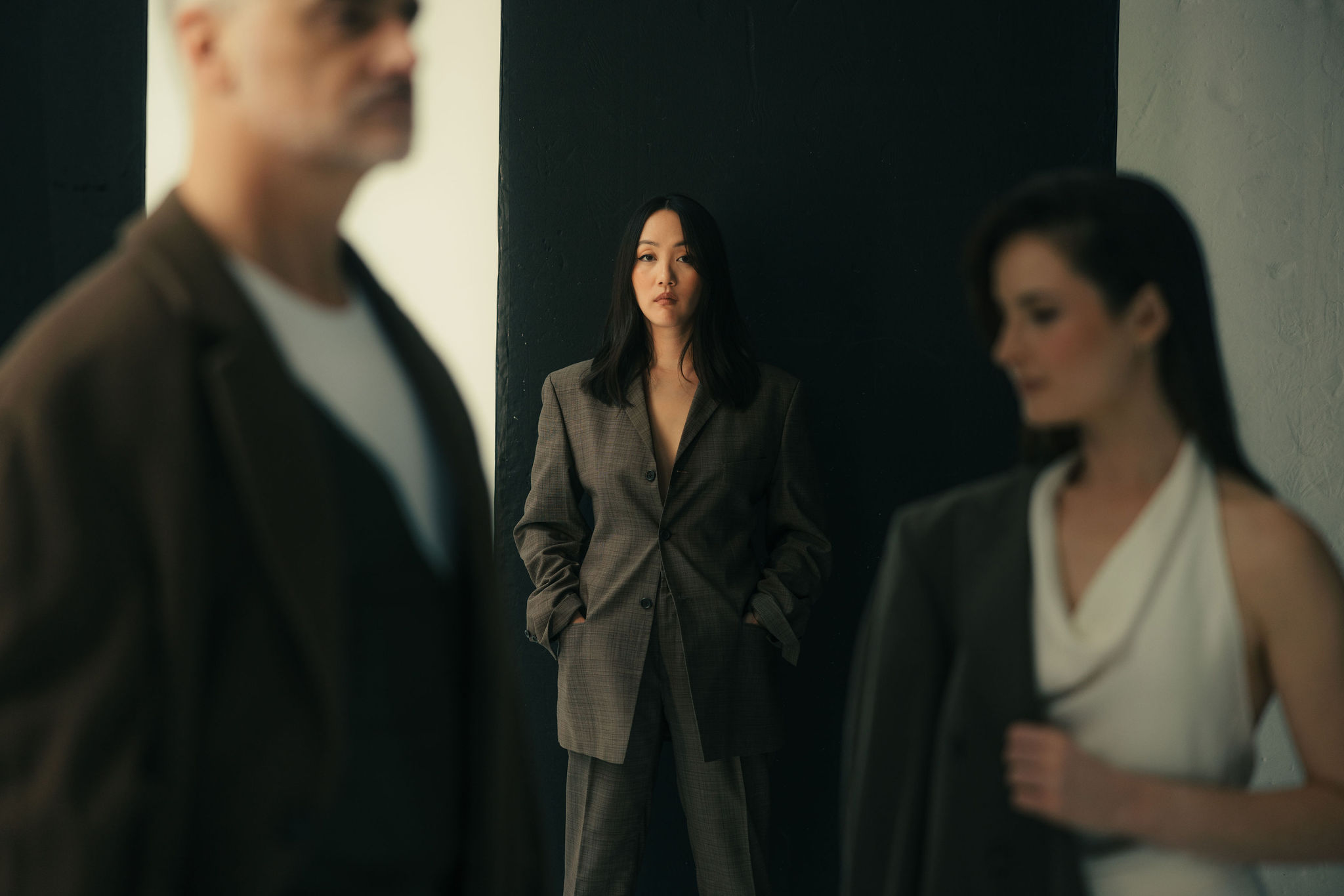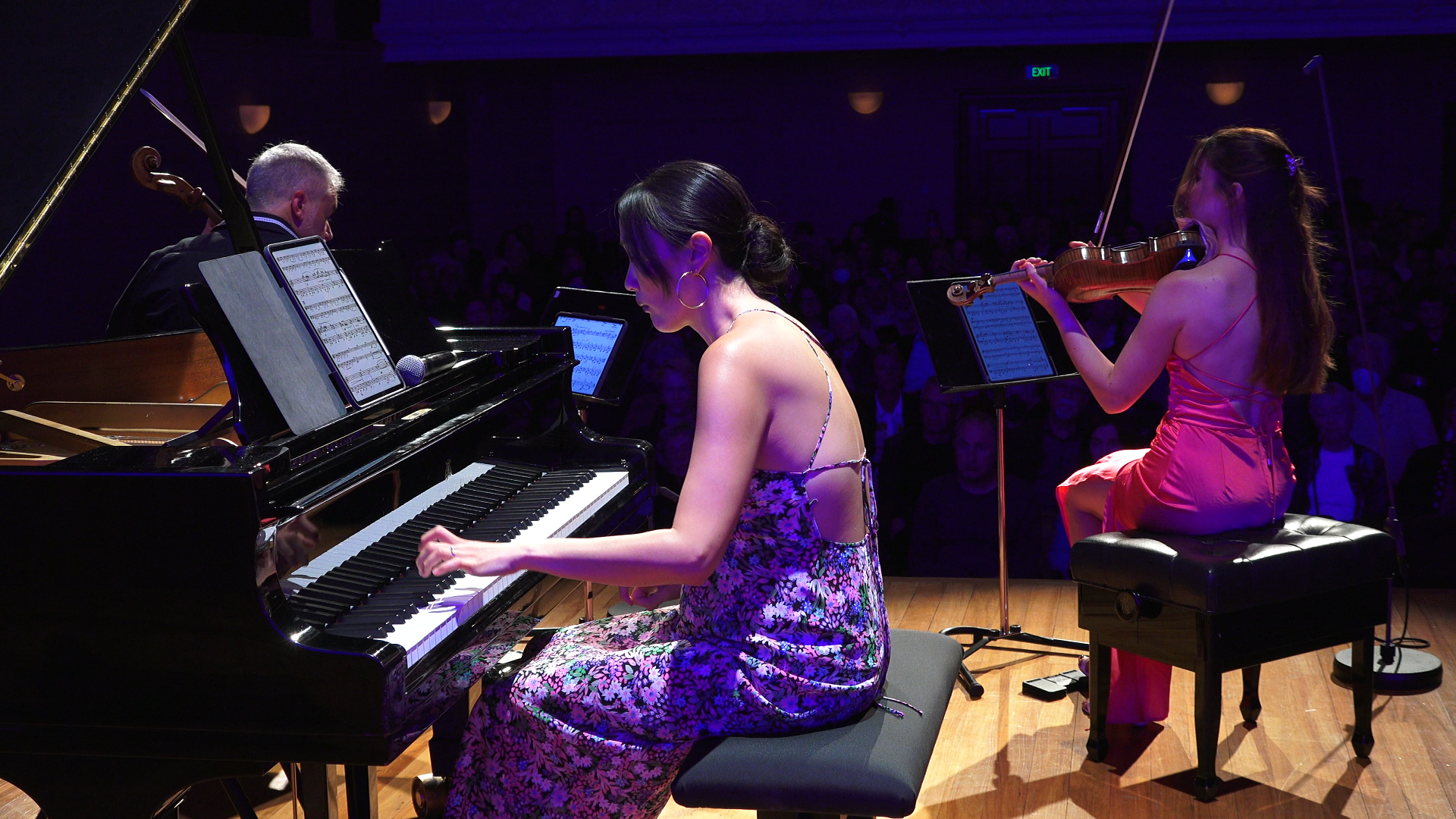Cowra Festival of International Understanding
25mar9:00 pmCowra Festival of International UnderstandingAustralia - livestream online from Auckland
Event Details
2021 will see Cowra celebrate one of Australia’s closest, neighbouring countries for the Festival of International Understanding – New Zealand! Featuring NZTrio March 25th via livestream from the Auckland
Event Details
2021 will see Cowra celebrate one of Australia’s closest, neighbouring countries for the Festival of International Understanding – New Zealand! Featuring NZTrio March 25th via livestream from the Auckland Town Hall Concert Chamber.
Set to be held Wednesday 24 March – Sunday 28 March 2021, Cowra’s Festival of International Understanding will be returning with a program full of activities, workshops and competitions in the weeks leading up to the festival as well as the Festival dinner, parade and carnival.
Free event, or by koha if you wish to give a donation to the Festival.
Live to air 9pm NZ time (7pm Australia), Thursday March 25th
Read more about the Cowra Festival of International Understanding here
Full programme notes below
Time
March 25, 2021 9:00 pm UTC 12(GMT+13:00)
Programme Notes
NZTrio presents: Aurora at the Cowra Festival of International Understanding
Claire Cowan: Subtle Dances
Beethoven: Opus 1, No. 1
John Psathas: Tarantismo
Salina Fisher: Kintsugi
Korngold: Piano Trio
Claire Cowan (NZ; B. 1983): Subtle Dances
Claire is a composer and performer based in Auckland. She studied composition at Auckland University and since graduating with Honours in 2006, has pursued a career in music for concert, film, theatre and TV. Claire is an experienced orchestrator and symphonic writer, having worked with many of New Zealand’s leading orchestras. In 2008 and 2010, Claire was the youngest composer to be featured in the NZSO’s annual Made in NZ concert. Her own performance project ‘The Blackbird Ensemble’ (25 piece orchestra) has performed to sold-out crowds in since its inception in 2010.
Claire writes: “Subtle Dances is a set of three short moods for piano trio. In writing, I have tried to approach the works as intuitively as possible. For me this creates the greatest connection between me as a composer, the performers, and the audience listening. Each work features one instrument more prominently – firstly cello, then piano, then violin. The music explores my continued fascination with the space created within the music, in which a listener can engage. Both hypnotic and meditative, the pieces present themselves as a contrasting set of interior landscapes. They are: passing thoughts, memories, unsolvable problems, and explorations of headspace.
It begins with a dance; a rhythmical and passionate interlocking of playful lines, but not without an element of danger or risk. Secondly – an elegy, the body in its slowest state. Thirdly – a struggle, an unanswered question, a cycle – and ultimately, a transition; a bursting through, into a new light.”
Co-commissioned in 2013 by NZTrio and Chamber Music New Zealand.
Ludwig van Beethoven (1770-1827): Piano Trio No. 1 in E flat. Op 1 No 1
Allegro
Adagio cantabile
Scherzo. Allegro assai
Finale. Presto
This is Beethoven arriving at his destiny, in Vienna. Bonn was at last behind him – his punishing childhood (he would be dragged out of bed for lessons in the night), his alcoholic father, his responsibility as head of the household. His mother had died in 1787 – curtailing his first attempt to move to Vienna, when he certainly met Mozart – and his father had just been forcibly retired from court, leaving Beethoven the sole provider on his orchestra salary (viola) and the piano lessons he gave on the side. It was supplemented by his father’s pension – half was paid to him so he wouldn’t drink it away.
But it wasn’t all bad! Beethoven made important connections in Bonn. Haydn passed through on the way to London: he attracted the attention of aristocratic patrons including Count Waldstein, who remianed a friend for life; and he began to compose, under the tutelage of his first teacher, Christian Neefe. So when he left for Vienna this second time, off to study with Haydn proper, he was armed not only with letters of introduction to the finest families but also the sketches to his first ever piano trio – this. Not that he published it immediately. He waited until he had three, perfect piano trios to make the maximum splash and succeeded, of course – always a very savvy self-promoter, Beethoven. And he put this, bold in every direction including its four-movement length, at the start.
It starts off so charming. But then immediately Beethoven begins playing with the harmony, and ratchets up the complexity and energy continually in a way that shows his already astonishing sophistication. The slow movement is the first of those classic Beethoven adagios, simple and serene, ending as it began; the short scherzo (and lyrical trio counterpart) is a true joke, full of surprises (those piano dissonances, the rhythm!); and the flashing finale with its boldly extended coda is vaguely reminiscent of Haydn’s Gypsy trio – except that Beethoven wrote this first. “I never learned anything from Haydn”, he claimed, outrageously. But listen to this trio and you may be persuaded that he was right.
John Psathas (NZ; b. 1966): Helix
Tarantismo
John Psathas (Born 1966) is one of a few New Zealand composers who have made a mark on the international scene, particularly in Europe and North America. He is now widely considered one of the three most important living composers of the Greek Diaspora. Born in Wellington, raised in Taumaranui and Napier, John is the son of Greek immigrant parents who arrived in New Zealand in the early 1960s.
John’s music is repeatedly commissioned and performed by many of the best musicians and orchestras around the world. His works are also regularly broadcast to audiences of millions in the USA and Europe. To him, music composition is first and foremost a communicative art form.
Tarantismo is the 3rd movement of a 3-movement work titled Helix, inspired by and infused with the rhythms and melodies of Greek folk music. This movement evokes a whirling tarantella dance. Folk-lore talks of this wild dance helping to eradicate the effects of the poison of the tarantula spider – which gently starts in the depths and builds in intensity to a dramatic climax.
Commissioned by NZTrio with support from the University of Auckland, and first performed in 2007.
Salina Fisher (NZ; b. 1993): Kintsugi
Kintsugi is the ancient Japanese art of repairing broken pottery with gold. All of the broken pieces are carefully joined back together with gold-dusted urushi (lacquer). Rather than hiding the damage, kintsugi celebrates all the cracks or ‘scars’ for the unique history that they represent. The object is more beautiful for having been broken.
The composer writes: “I am personally drawn to kintsugi as a metaphor for embracing ‘brokenness’ and imperfection as a source of strength. This piece for piano trio is my expression and exploration of kintsugi, and involves musical fragmentation, fragility, mending, and finding beauty in the cracks. While writing this piece, I was very fortunate to meet Wellington-based Japanese ceramicist and kintsugi practitioner Kumiko Jacolin. I am grateful to Kumiko for her work and our discussions on Japanese philosophy in ceramics that have been influential in my creative process.”
Since recently graduating with a Master of Music in Composition from Manhattan School of Music, New York, Salina has been appointed Composer-in-Residence at New Zealand School of Music – Te Kōkī, Victoria University of Wellington, 2019-2020.
Commissioned by NZTrio in 2020.
Erich Korngold (1897-1957): Piano Trio in D major, Op. 1
Allegro non troppo, con espressione
Scherzo. Allegro – Trio. Viel langsamer, innig
Larghetto. Sehr langsam
Finale. Allegro molto e energico
This does not sound like the work of a child! And that’s exactly what they said at the time in Vienna. Everyone, but everyone, was astonished by Korngold. Puccini said he had twice as much talent as he needed: Gustav Mahler shook his head in wonder and said “a genius, a genius”; Richard Strauss spoke of “awe and concern .. This assurance of style, this mastery of form, this characteristic expressiveness, this bold harmony, are truly astonishing.”
But then, this was the greatest prodigy of the 20th century, whose meteoric early career in Europe has been somewhat eclipsed by his later film success in Hollywood. Much was still to come: international fame with Die Tote Stadt at the age of 23; at 33, voted Austria’s greatest living composer; a year later appointed the youngest-ever professor of music in Vienna. Then upheaval, of course – the rise of the Third Reich and having to flee Europe, never to return. But in 1910, this was a 12-year-old boy who had been able to reproduce anything on the piano since the age of five. At seven, he began composing original music. At nine, he astonished Mahler with his first cantata. At eleven, while he was writing this trio, his first ballet The Snowman was finishing a sensational first season at the Vienna Staatsoper. He also had the greatest pianist in Europe, Artur Schnabel, touring his piano sonata no 2; and he was completing his first two operas, both premiered the following year. This trio premiered in Munich one month shy of Korngold’s 13th birthday, and was in New York within the month.
It has an extraordinary boldness and freshness, evoking that lush, slightly decadent soundworld of Vienna before the war. You can hear Korngold’s lyrical gift throughout, beginning with that lovely, watery piano opening. The first movement is an exploration of contrasts: bursts of energy contrasted with an almost ecstatic stillness. A mischievous, brilliant scherzo surrounds a trio that sounds like a sultry cabaret song. The strings shine in the slow movement (pizzicato surprise!), leading into a brilliant finale that is part angular and modern, part nostalgic love-duet, and while it somewhat resembles Richard Strauss it goes far beyond what Strauss was writing at the time. Korngold dedicated it to “Meinem lieben Papa”, my dear Papa, and was pleased enough to finally assign an opus 1. Age 12.
Programme notes by Charlotte Wilson


